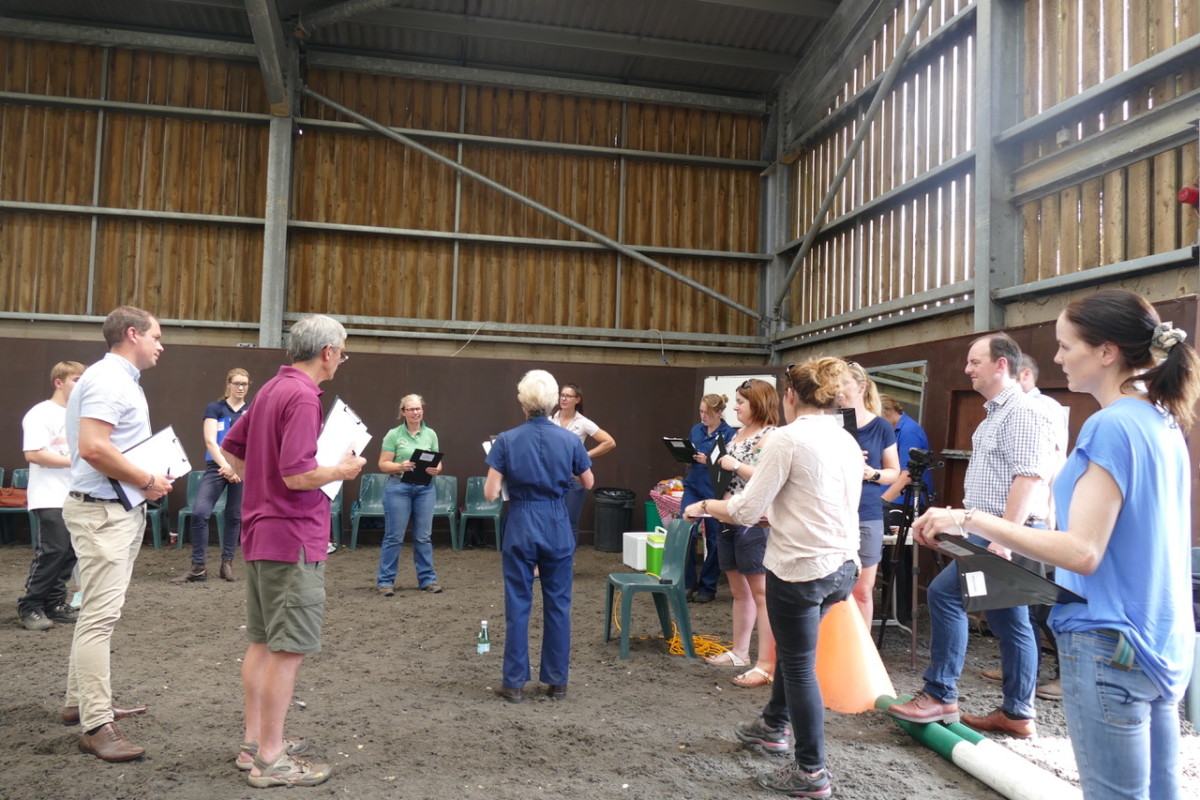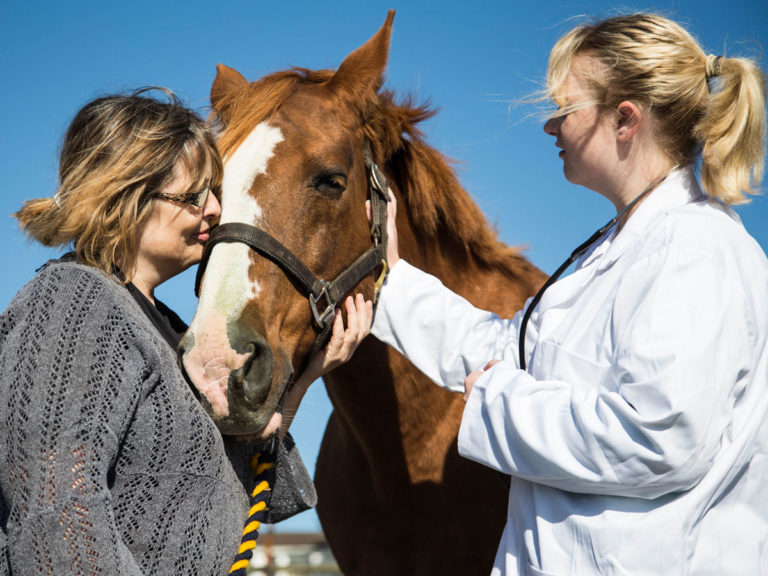
A new method for equine performance assessment has been tested on vets. Conducted by Dr. Sue Dyson, Head of Clinical Orthopaedics at the Centre for Equine Studies at the Animal Health Trust in Newmarket, the study assessed how accurately vets may be able to use an ethogram, developed by Dr. Dyson, to assess pain in ridden horses. The participating vets collectively commended the value of the ethogram, which defines 24 ridden behaviors that may reflect pain and lameness.
The study was conducted at World Horse Welfare’s centre in Norfolk on July 21. Twenty horse and rider combinations, together with a range of professional practitioners, volunteered their time to support the study, which has the potential to transform the welfare of ridden horses.
Initially the horses were assessed by Association of Chartered Physiotherapists in Animal Therapy (ACPAT) physiotherapist Jo Spear. The back was examined to check for any areas of muscle tightness or discomfort. Society of Master Saddlers (SMS) Saddle Fitter Liz Suddaby checked the fit, placement, balance and suitability of each horse’s saddle. The horses were then given a 15 minute ridden warm-up before executing an 8-minute purpose-designed dressage test.

During the dressage test, a team of 10 equine vets, selected from 40 volunteers, scored each horse for the presence of 24 behaviors that might reflect pain. The tests were filmed so that Dyson could make a comparison between her own real-time behavior assessments and video analysis and so that the rider skill level could be scored retrospectively by Dr. Anne Bondi, BHSI.
The 10 equine vets, four men and six women, who varied in their years of experience, collectively said that it was one of the best days of continual professional development that they had ever had and that they would change their procedures for both pre-purchase examinations and investigations of either lameness or poor performance in the future.
Dr. Helen Whitbread of Deben Valley Equine Veterinary Clinic summarised: “This system is such a useful tool; most of the factors we were scoring were not a surprise, but by being able to quantify the pain in a way that a client can understand and relate to is priceless. Too often in the past our suggestions that a horse is demonstrating abnormal ridden behaviour because of pain has been brushed aside as ‘it has always done that’. Now I can say, for example: ‘Yes, it has scored >8 and is therefore likely to have been in musculoskeletal pain the whole time you have owned it’.”
Dyson continued: “The behavioral differences between the lame and non-lame horses in the study were very apparent. I am currently cross-referencing analysis of the volunteers’ results with me as the Gold Standard. Early indications show that by giving vets a clear understanding of pain-associated behavior markers they will be better able to recognize pain-related behavior in ridden horses, which might reflect lameness, and to communicate potential performance problems more effectively with their clients.”
An overview of this study will be presented at the Saddle Research Trust Conference in December.
To find out more about the Saddle Research Trust Conference on Saturday, December 8, 2018, and to buy tickets, visit www.srt2018.com or call 07948 303281.
Reference
1. Dyson, S, Berger, J, Ellis, A, Mullard, J. Development of an ethogram for a pain scoring system in ridden horses and its application to determine the presence of musculoskeletal pain. J Vet Behav: Clin Appl Res doi:10.1016/j.jveb.2017.10.008
About the Saddle Research Trust
The Saddle Research Trust (SRT) was founded in 2009 to promote the health, welfare, safety and performance of ridden horses and riders. Evidence-based information and advice helps riders and owners to understand and identify when their horse is underperforming, lame or in pain. The information provided can help to keep riders safe by enabling them to identify issues before they become a problem and a potential danger.
Education helps horse owners and riders to understand that horses communicate their pain or discomfort in a way that is often misinterpreted as “naughty” or “disobedient”; this conflict behaviour can result in injury to horse, rider and to the general public.
Freely available, open access, web-based resources and e-newsletters are provided for the benefit of the public.
The SRT supports continued professional development of professional practitioners and education of equine science students. The SRT also offers scholarship opportunities for saddle fitting training.
The SRT helps to identify knowledge gaps and facilitates scientific research in an area which is widely acknowledged as difficult and expensive to carry out due to its complexity.
The SRT offers opportunities for supervision, mentoring, advice and practical assistance to student equine researchers to facilitate the improvement of the quality of equine research.








